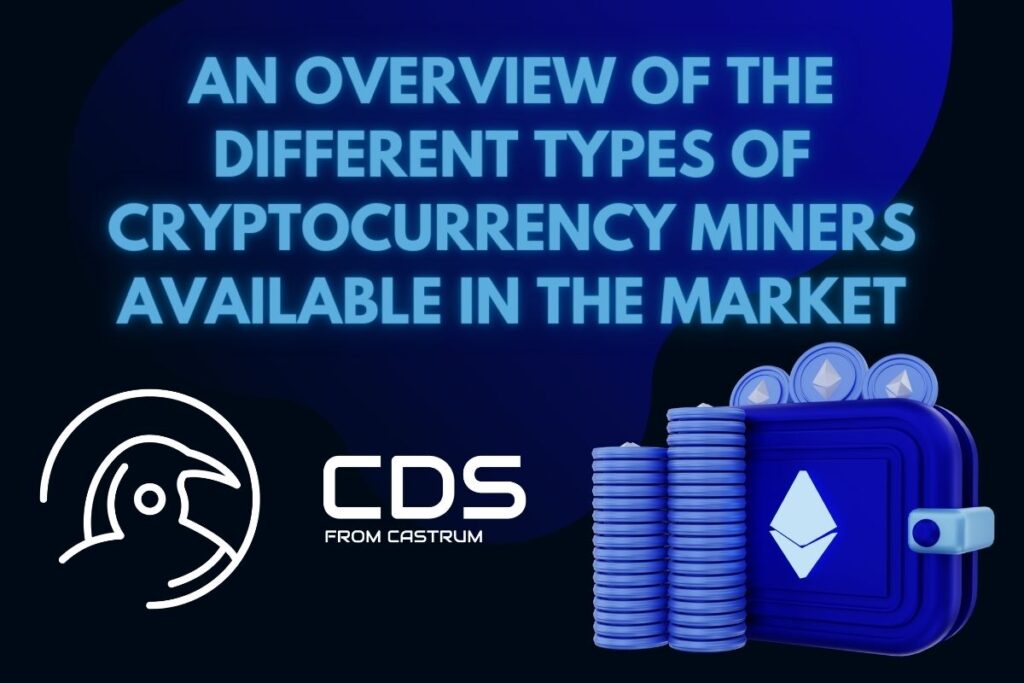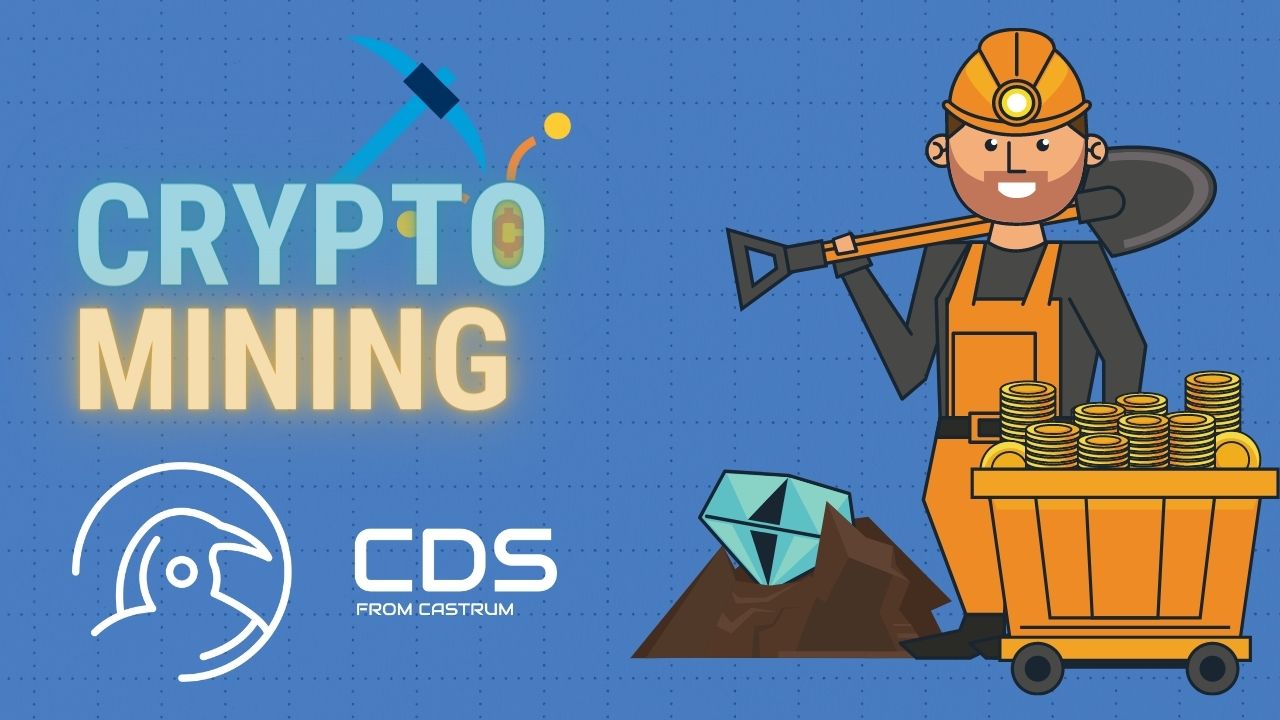A Comprehensive Guide to Cryptocurrency Mining and What it Entails
Cryptocurrency mining is the process of using computer hardware to solve complex mathematical problems that verify and secure transactions on a blockchain network. In return for providing computing power, miners are rewarded with newly minted cryptocurrency units.
Here is a comprehensive guide to cryptocurrency mining and what it entails:
- Hardware requirements: Cryptocurrency mining requires specialized hardware, typically a powerful computer with one or more graphics processing units (GPUs) or specialized mining hardware, called ASICs (Application-Specific Integrated Circuits).
- Mining software: To mine cryptocurrency, miners need mining software, which is typically available for free on the internet. The software controls the hardware and connects the miner to the blockchain network.
- Choosing a cryptocurrency to mine: Not all cryptocurrencies are equally profitable or easy to mine. Some require specialized hardware, while others can be mined using basic hardware. It’s important to research and choose a cryptocurrency that suits the miner’s hardware, budget, and profitability expectations.
- Mining pools: Mining pools are groups of miners who combine their computing power to mine cryptocurrency more efficiently. Pools distribute rewards among members based on their contributions, increasing the chances of earning a steady stream of income.
- Electricity costs: Mining cryptocurrency requires a lot of electricity, and electricity costs can significantly impact profitability. It’s important to factor in electricity costs when calculating potential profits and choosing a cryptocurrency to mine.
- Profitability and risks: Cryptocurrency mining can be profitable, but it’s also risky. Profitability depends on the cryptocurrency being mined, hardware costs, electricity costs, and other factors. It’s important to research and calculate potential profits and risks before investing in mining hardware.
- Security: Cryptocurrency mining can be a target for hackers and malware. Miners should take steps to secure their hardware and software, including using antivirus software, firewalls, and two-factor authentication.
In summary, cryptocurrency mining involves using specialized hardware and software to earn cryptocurrency rewards by verifying and securing transactions on a blockchain network. Mining can be profitable, but it requires research, investment, and attention to security and profitability factors.
What is Crypto Mining and How Does it Work?

Cryptocurrency mining is the process of verifying transactions on a blockchain network using powerful computer hardware. In a blockchain network, transactions are verified and added to the blockchain by solving complex mathematical problems. Miners use specialized hardware and software to solve these problems and earn cryptocurrency rewards in return.
When a new transaction is added to the blockchain network, it needs to be verified by multiple nodes in the network. These nodes are typically computers or servers that are connected to the network. The verification process involves solving complex mathematical problems that require significant computing power.
Miners use specialized hardware, such as graphics processing units (GPUs) or application-specific integrated circuits (ASICs), to solve these problems more efficiently. The mining software controls the hardware and connects the miner to the blockchain network. The software also helps miners track and manage their mining activities and rewards.
When a miner successfully verifies a transaction and solves the mathematical problem, they earn a reward in the form of cryptocurrency. The amount of cryptocurrency earned depends on the complexity of the problem and the number of miners currently working on the network. In some cases, miners may also earn transaction fees paid by users to have their transactions verified more quickly.
Cryptocurrency mining can be a profitable activity, but it requires significant investment in hardware, software, and electricity. It’s also a competitive market, with many miners vying for rewards and using increasingly powerful hardware to solve problems more efficiently. As a result, the mining process can become more difficult over time, making it more challenging for individual miners to earn rewards.
The Benefits of Crypto Mining & Why You Should Consider It
Crypto mining offers several benefits that make it an attractive option for investors and tech enthusiasts. Here are some of the key benefits of crypto mining and why you should consider it:
- Potential for profits: Cryptocurrency mining can be a profitable activity, with the potential to earn significant returns on investment. The amount of profit depends on factors such as the cryptocurrency being mined, the cost of electricity, and the efficiency of the mining hardware.
- Decentralization: Cryptocurrency mining is a decentralized activity that allows individuals to participate in the validation and security of blockchain networks. This helps to promote decentralization and reduce the power of centralized institutions.
- Control: Mining allows individuals to have greater control over their cryptocurrency investments. Rather than purchasing cryptocurrency on an exchange, mining allows individuals to earn cryptocurrency directly and hold it in their own wallets.
- Privacy: Mining can offer greater privacy for individuals, as they can mine cryptocurrency without the need to provide personal information to exchanges or other third-party services.
- Learning opportunity: Mining can be a great way to learn more about the inner workings of blockchain networks and the technical aspects of cryptocurrency. It can also be a fun and engaging activity for tech enthusiasts.
- Future potential: As the adoption of cryptocurrency continues to grow, the potential for profits from mining may also increase. By participating in mining now, individuals can position themselves to potentially benefit from future growth in the cryptocurrency market.
Overall, crypto mining offers a range of benefits, including the potential for profits, decentralization, control, privacy, learning opportunities, and future potential. While it requires investment in hardware and electricity, it can be a rewarding and engaging activity for those interested in cryptocurrency and blockchain technology.
What You Need to Get Started With Crypto Mining

To get started with crypto mining, you will need the following:
- Mining hardware: You will need specialized hardware, such as a GPU or ASIC, to mine cryptocurrency efficiently. The type of hardware you need depends on the specific cryptocurrency you plan to mine.
- Mining software: You will need to install mining software on your computer or mining rig to connect to the blockchain network and start mining. There are several mining software options available, including CGMiner, BFGMiner, and EasyMiner.
- Wallet: You will need a cryptocurrency wallet to store the coins you earn from mining. A wallet is a secure digital wallet that allows you to send and receive cryptocurrency. There are several types of wallets available, including hardware wallets, desktop wallets, and mobile wallets.
- Mining pool: Joining a mining pool can increase your chances of earning rewards, especially for individual miners with limited resources. In a mining pool, multiple miners work together to solve mathematical problems and earn rewards collectively.
- Electricity: Mining requires significant amounts of electricity, so you will need to have access to affordable and reliable electricity to make mining profitable.
- Internet connection: You will need a stable and fast internet connection to connect to the blockchain network and communicate with other nodes in the network.
It’s important to note that cryptocurrency mining can be a complex and challenging activity, and the profitability of mining depends on several factors, including the cost of hardware, electricity, and the current market price of the cryptocurrency being mined. Before getting started with mining, it’s essential to do your research and understand the risks and potential rewards involved.
A Step-by-Step Guide to Setting Up Your Own Crypto Miner
Here is a step-by-step guide to setting up your own crypto miner:
- Research: Before starting, research the specific cryptocurrency you plan to mine and the hardware requirements for mining that cryptocurrency. Different cryptocurrencies have different mining algorithms, and the hardware required to mine them may vary.
- Purchase hardware: Purchase the necessary mining hardware, such as a GPU or ASIC, based on your research. The hardware should be optimized for the cryptocurrency you plan to mine.
- Assemble the hardware: Assemble the hardware into a mining rig or computer. You may need additional components such as a power supply unit (PSU) and cooling fans.
- Install mining software: Install mining software on your computer or mining rig. Some popular mining software includes CGMiner, BFGMiner, and EasyMiner. Follow the instructions provided by the mining software to install it on your computer.
- Join a mining pool: Join a mining pool to increase your chances of earning rewards. There are several mining pools available, and you can choose one based on factors such as the size of the pool and the fees charged.
- Set up a wallet: Set up a cryptocurrency wallet to store the coins you earn from mining. There are several types of wallets available, including hardware wallets, desktop wallets, and mobile wallets.
- Configure the mining software: Configure the mining software to connect to the mining pool and start mining. Follow the instructions provided by the mining software to set up the mining configuration.
- Monitor performance: Monitor the performance of your mining rig regularly to ensure that it’s running efficiently and that you’re earning rewards. You may need to adjust settings such as fan speed and overclocking to optimize performance.
It’s important to note that setting up a crypto miner can be a complex process, and it’s essential to do your research and follow instructions carefully to avoid any mistakes. Additionally, the profitability of mining depends on several factors, including the cost of hardware, electricity, and the current market price of the cryptocurrency being mined. It’s important to consider these factors before investing in mining hardware.
An Overview of the Different Types of Cryptocurrency Miners Available in the Market

There are several types of cryptocurrency miners available in the market, including:
- CPU mining: CPU mining is the simplest form of cryptocurrency mining and involves using your computer’s CPU to mine cryptocurrency. However, it’s not very efficient and can be slow, making it less profitable.
- GPU mining: GPU mining involves using a graphics processing unit (GPU) to mine cryptocurrency. GPUs are more efficient than CPUs and can handle more complex calculations, making them better suited for mining.
- ASIC mining: ASIC (Application-Specific Integrated Circuit) mining involves using specialized hardware designed specifically for mining cryptocurrency. ASIC miners are highly efficient and can generate high profits but can be expensive to purchase.
- Cloud mining: Cloud mining involves renting mining power from a cloud mining provider. The provider manages the hardware, and you receive a share of the mining rewards based on the amount of mining power you rented.
- Mobile mining: Mobile mining involves using your mobile device to mine cryptocurrency. However, due to the limited processing power of mobile devices, mobile mining is not very efficient and can drain your battery quickly.
- Browser mining: Browser mining involves mining cryptocurrency through a browser-based platform, such as a web browser extension. This method is not very efficient and may not generate significant profits.
It’s important to note that the type of mining method you choose depends on several factors, including the cryptocurrency you plan to mine, the available hardware, and your budget. It’s essential to do your research and understand the pros and cons of each mining method before choosing one.















Leave a comment